Before I answer that question, I'd like to step back and talk a bit about kids' eating habits in the garden.
When children are in contact with nature and gardening from early age, they kinda integrate that knowledge - that there's always something growing that you can eat - and will act on it on every occasion.
I kinda suspected that and wanted from the first year of our new garden (2015) to include several plants that our boy, then 2 and a half, could try and potentially eat. Of course strawberries and other berries are the "gateway" foods to a life of eating directly from the garden, but I wanted something that's not necessarily sweet and possibly green in color ;)
One of the plants was asparagus and I've written at length about that. Another one was sorrel, with it's refreshingly sour baby leaves an year around treat. Of course we planted peas - Sugar Snap the first year, then we added Meteor and Golden Sweet Snow pea. Each was a huge success by its own, but including those three varieties allowed for a longer harvesting period.
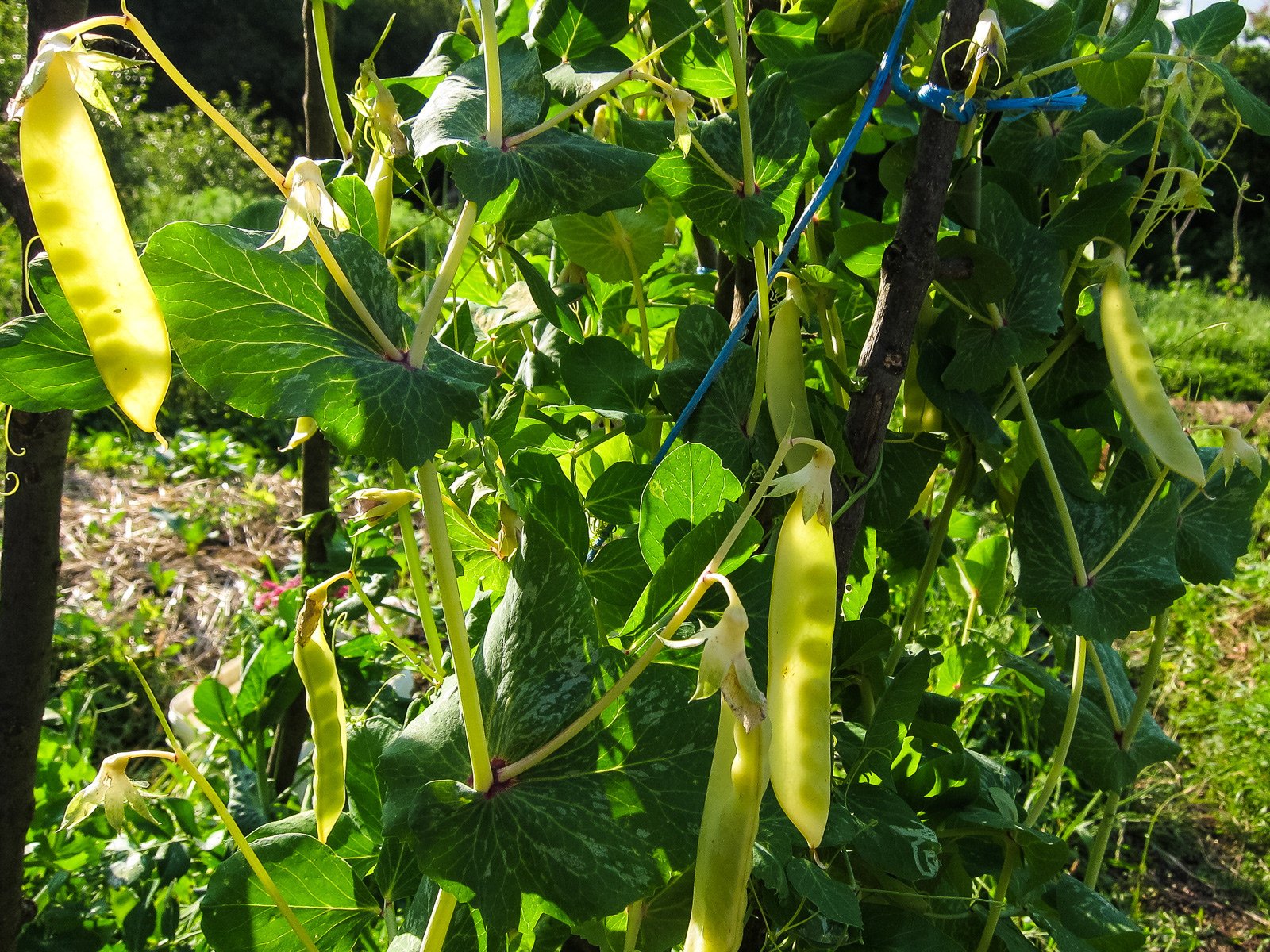
What surprised me was how quickly the kids adapted to this new reality - if we're in the garden, there must be something to eat! So they're tuning into their inner forager :)
The peas won't last the whole summer, however, and we needed to fill a "gap" between peas and tomatoes and cucumbers. Carrots only wasn't going to cut it!
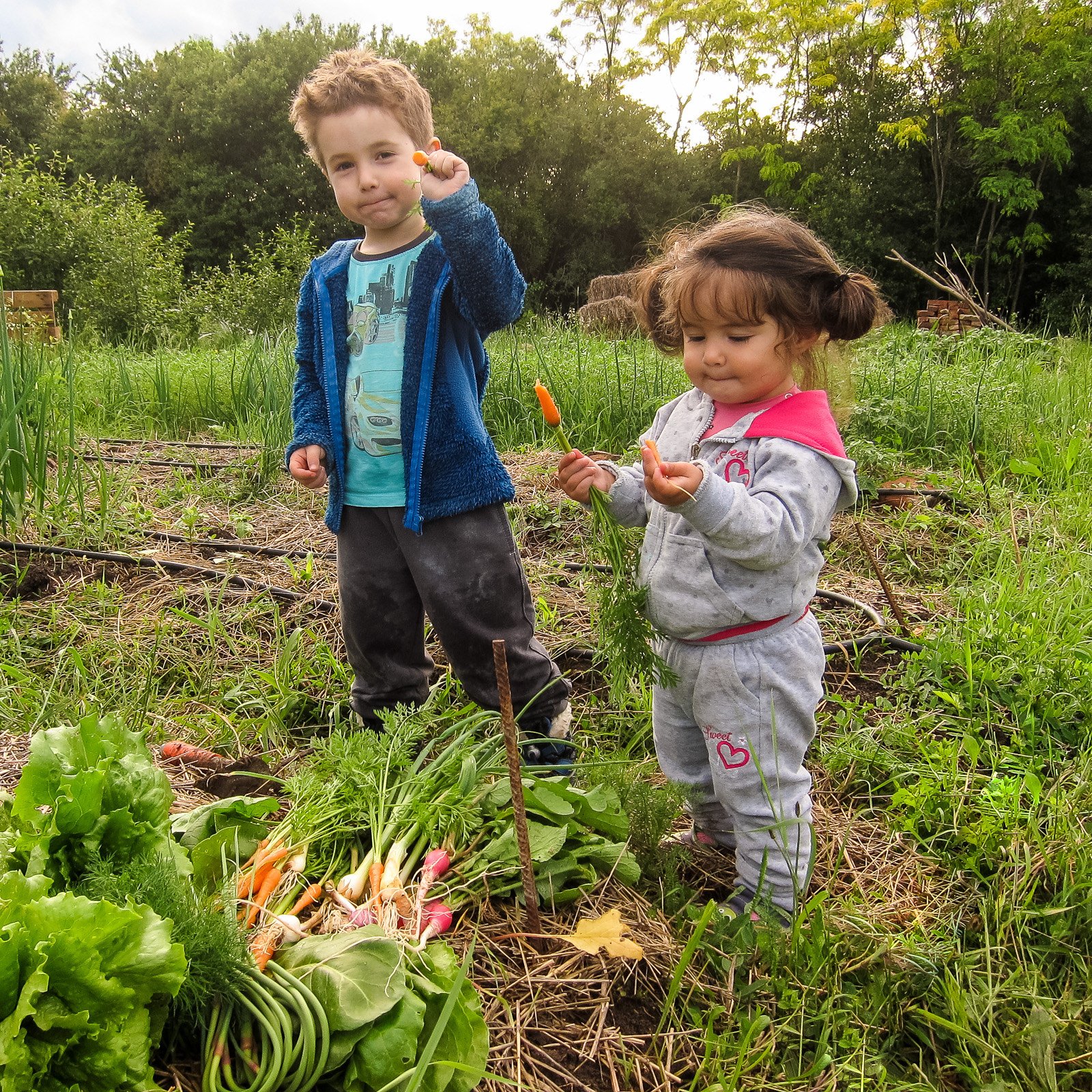
So that's how we came to planting chickpeas! They can be sown as early as the peas (that's early March around here), or even earlier, with the broad beans. They take longer time to mature and they don't need any kind of trellis or support, so it's very little work growing them. And what's most important, they can be eaten green, straight from the pods!
The kids turn everything into a game and that will never cease to amaze me! They gather the still green pods, count them, split them, take out the chickpeas, sort them by size, divide them equally, help each other and run around screaming how great chickpeas are... in the absence of actual peas.
Last year our big boy put all the chickpeas in the ground (5 rows). We also helped him plant onion sets around this 4 x 1 m large bed. The reasoning behind this is chickpeas start to ripen and dry at about the same time the onions do. So they both don't need watering the the last few weeks of their growth, as watering at that time would encourage mold.
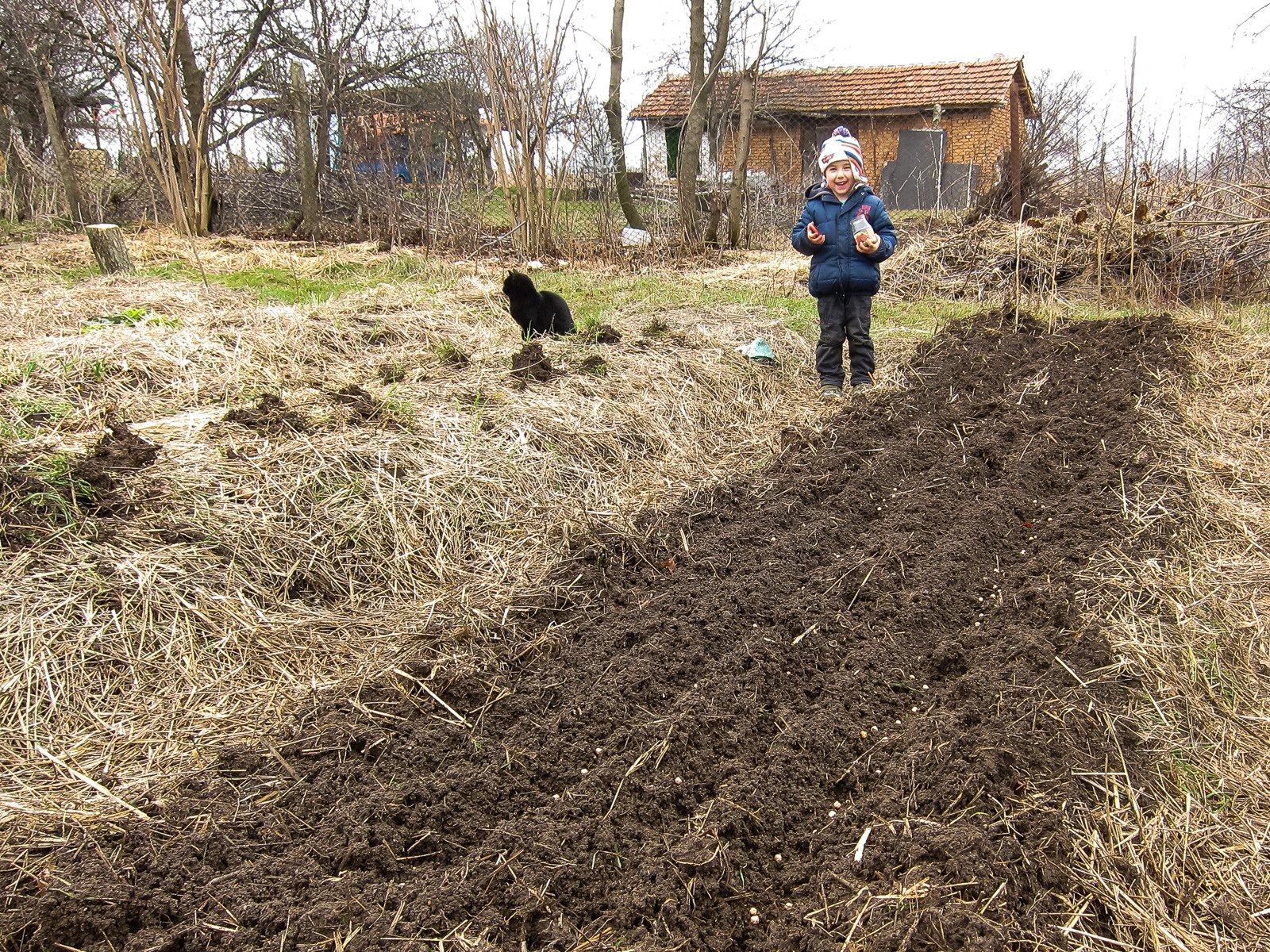
After a slow start, due to colder weather, the plants rush up and start branching.
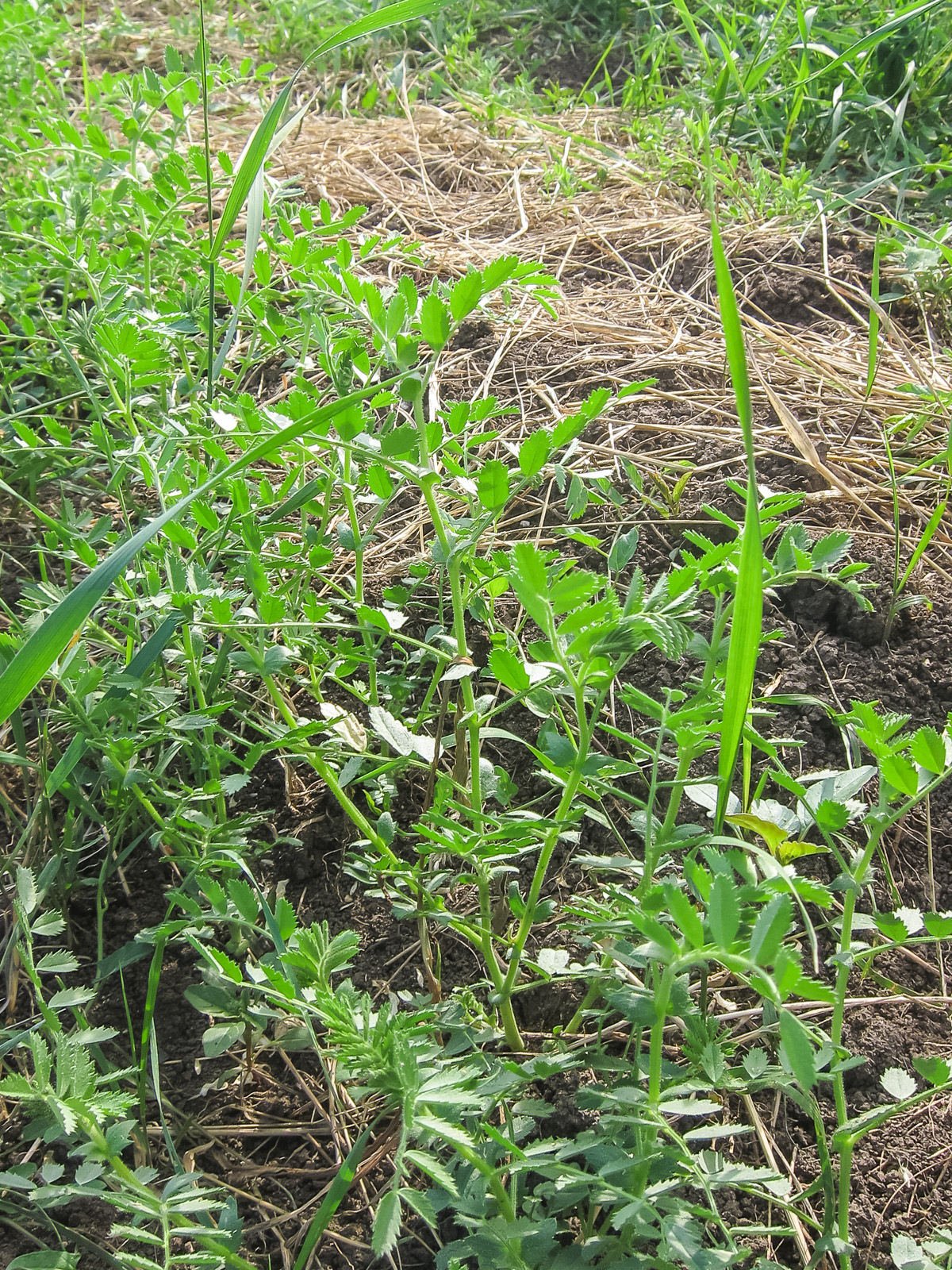
By early June, it already resembles a hedge and is in flower. That's a good time for a round of neem oil spray, as the weevils start to settle in the flowers, waiting to lay their eggs. Note the onion plants on the edge, growing just as all as the chickpeas, 60-80 cm at that point.
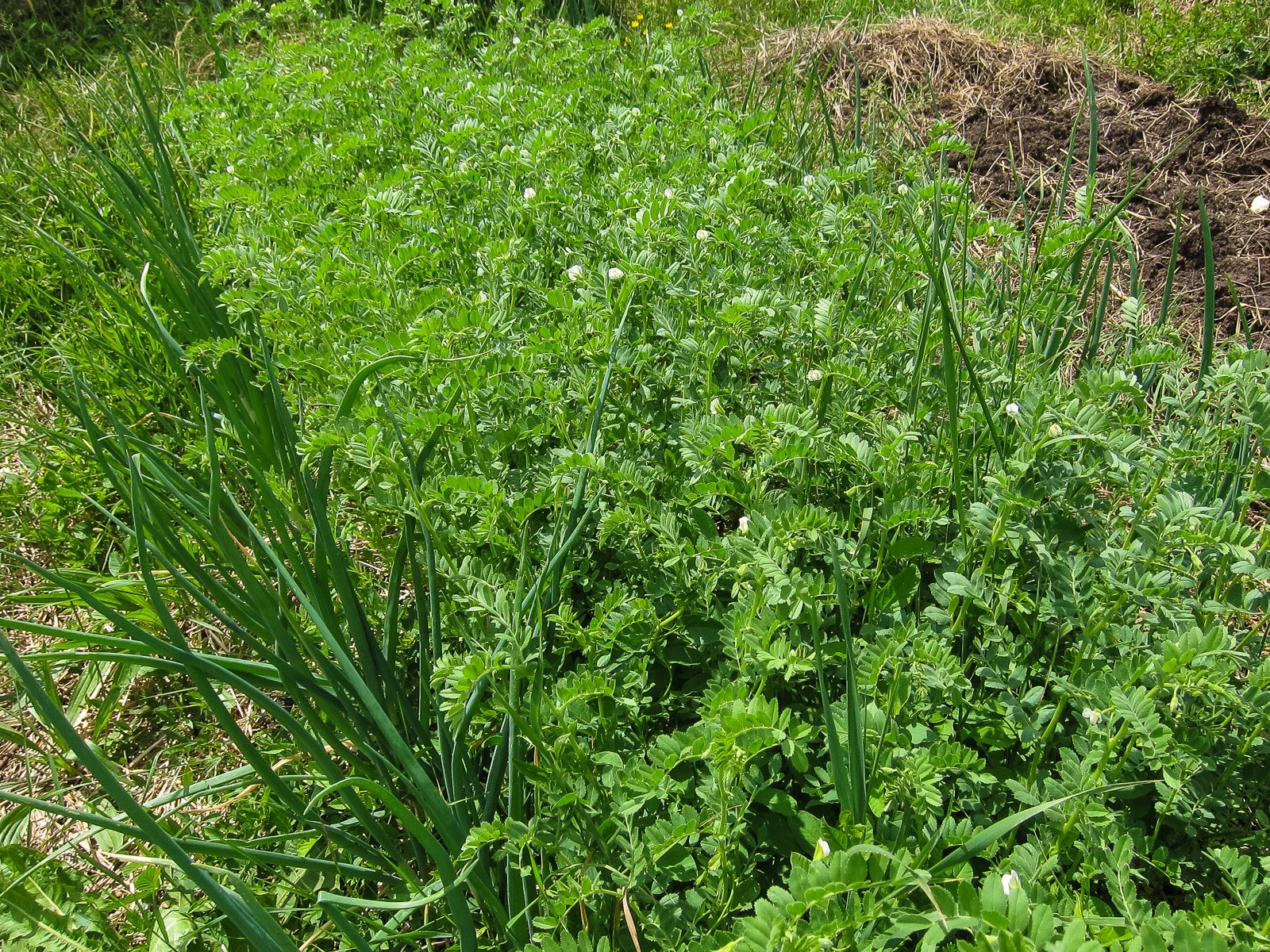
A month later still and the chickpeas are ready to be picked and eaten on the spot!
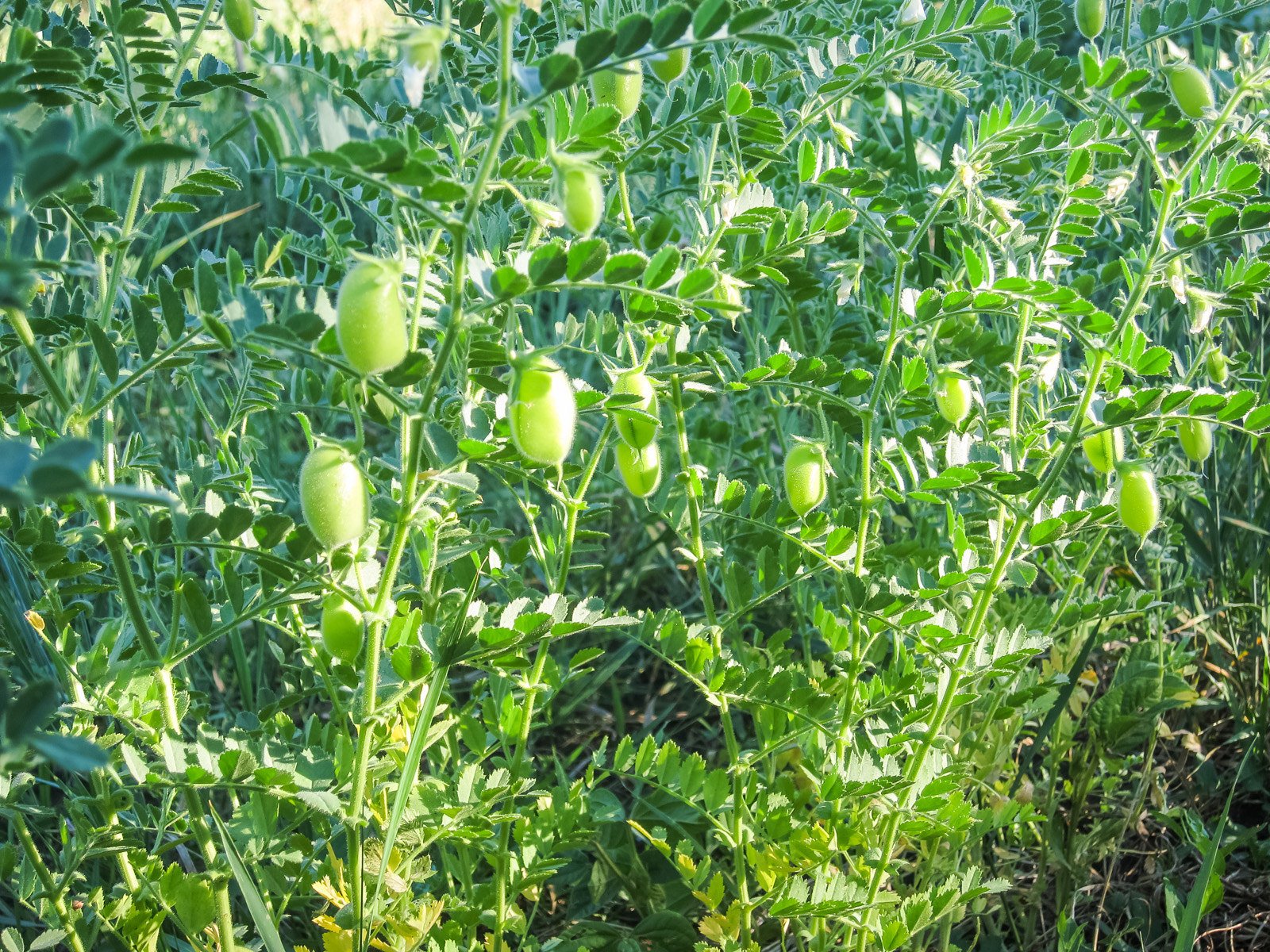
They start to form from the bottom up, so the kids have learned to give each pod a slight squeeze to check if a pea has formed inside and how large it is. It's self regulation at its best! They know if they pick a pod with a tiny pea inside, they'll "lose" a larger pea down the road.
And this year, we're growing a second variety - black chickpeas!
More of my gardening posts
- A garden is a school of life
- Slow and lazy compost
- Fruit tree herbal guilds
- Propagating currants
- Growing asparagus
To learn a bit more about my backstory, see my intro post. Also check out the blog of my wife and better half - Gerry.

